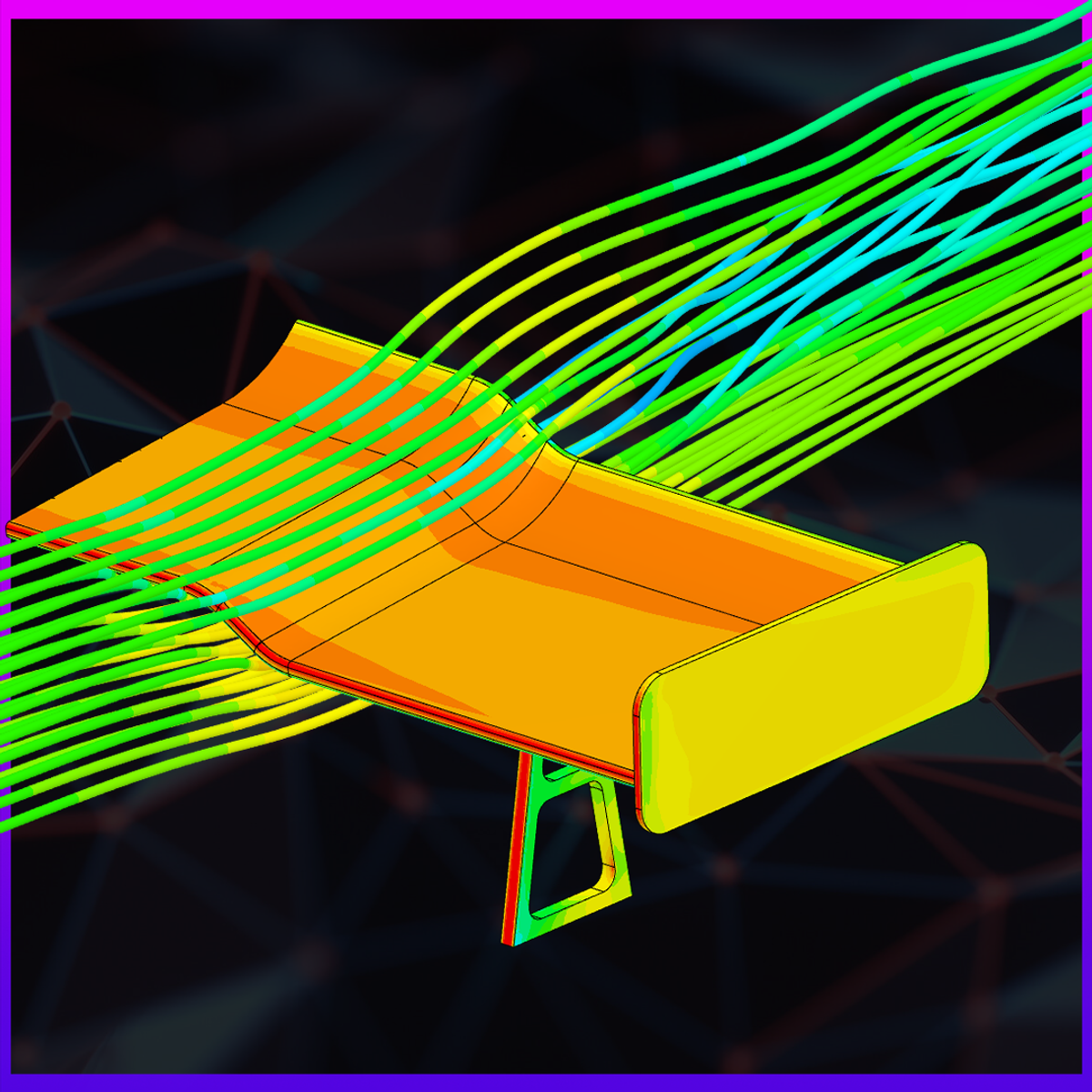
In this hands-on project, you will learn about Computational Fluid Dynamics (CFD) and perform an incompressible fluid flow simulation around a spoiler using the cloud-based simulation tool SimScale. We will set up simulation cases with provided geometries to learn the fundamentals of CFD and how a spoieler simulation is approached and set up in the first place. We will walk through the classical three step process of every simulation which includes the pre-processing, processing and post-processing step.
Read more
In this hands-on project, you will learn about Computational Fluid Dynamics (CFD) and perform an incompressible fluid flow simulation around a spoiler using the cloud-based simulation tool SimScale. We will set up simulation cases with provided geometries to learn the fundamentals of CFD and how a spoieler simulation is approached and set up in the first place. We will walk through the classical three step process of every simulation which includes the pre-processing, processing and post-processing step.
In this hands-on project, you will learn about Computational Fluid Dynamics (CFD) and perform an incompressible fluid flow simulation around a spoiler using the cloud-based simulation tool SimScale. We will set up simulation cases with provided geometries to learn the fundamentals of CFD and how a spoieler simulation is approached and set up in the first place. We will walk through the classical three step process of every simulation which includes the pre-processing, processing and post-processing step.
SimScale is an engineering simulation platform that is revolutionizing the way engineers, designers, scientists, and students design products. The SimScale platform is accessible completely via a standard web browser, with an easy-to-use interface which supports numerous simulation types including solid mechanics (FEM), fluid dynamics (CFD) & thermodynamics.
This course runs on Coursera's hands-on project platform called Rhyme. On Rhyme, you do projects in a hands-on manner in your browser. You will get instant access to pre-configured cloud desktops containing all of the software and data you need for the project, for this project you need no special setup or any data. Everything is already set up directly in your internet browser so you can just focus on learning!
Notes:
- This course works best for learners who are based in the North America region. We’re currently working on providing the same experience in other regions.
What's inside
Syllabus
Good to know
Save this course
Activities
Organize and Synthesize Course Materials
Show steps
Improve your comprehension by creating a comprehensive set of notes that integrates and summarizes key concepts from the course materials.
Show steps
-
Review lecture notes, readings, and assignments.
-
Identify key concepts and organize them into a logical structure.
-
Create a set of notes that includes summaries, diagrams, and examples.
Read: Computational Fluid Dynamics: A Practical Approach
Show steps
Gain a deeper understanding of CFD principles and applications by reviewing this comprehensive textbook.
Show steps
-
Purchase or borrow the book.
-
Read and study the relevant chapters.
-
Complete the practice problems and review the solutions.
Show all two activities
Organize and Synthesize Course Materials
Show steps
Improve your comprehension by creating a comprehensive set of notes that integrates and summarizes key concepts from the course materials.
Show steps
- Review lecture notes, readings, and assignments.
- Identify key concepts and organize them into a logical structure.
- Create a set of notes that includes summaries, diagrams, and examples.
Read: Computational Fluid Dynamics: A Practical Approach
Show steps
Gain a deeper understanding of CFD principles and applications by reviewing this comprehensive textbook.
Show steps
- Purchase or borrow the book.
- Read and study the relevant chapters.
- Complete the practice problems and review the solutions.
Career center
CFD Engineer
CFD Research Scientist
Aerospace Research Scientist
Aerospace Engineer
Computational Scientist
Applied Mathematician
Simulation Engineer
Mechanical Engineering Research Scientist
Mathematician
Automotive Engineer
Physicist
Mechanical Engineer
Software Engineer
Data Scientist
Product Designer
Reading list
Share
Similar courses
OpenCourser helps millions of learners each year. People visit us to learn workspace skills, ace their exams, and nurture their curiosity.
Our extensive catalog contains over 50,000 courses and twice as many books. Browse by search, by topic, or even by career interests. We'll match you to the right resources quickly.
Find this site helpful? Tell a friend about us.
We're supported by our community of learners. When you purchase or subscribe to courses and programs or purchase books, we may earn a commission from our partners.
Your purchases help us maintain our catalog and keep our servers humming without ads.
Thank you for supporting OpenCourser.



